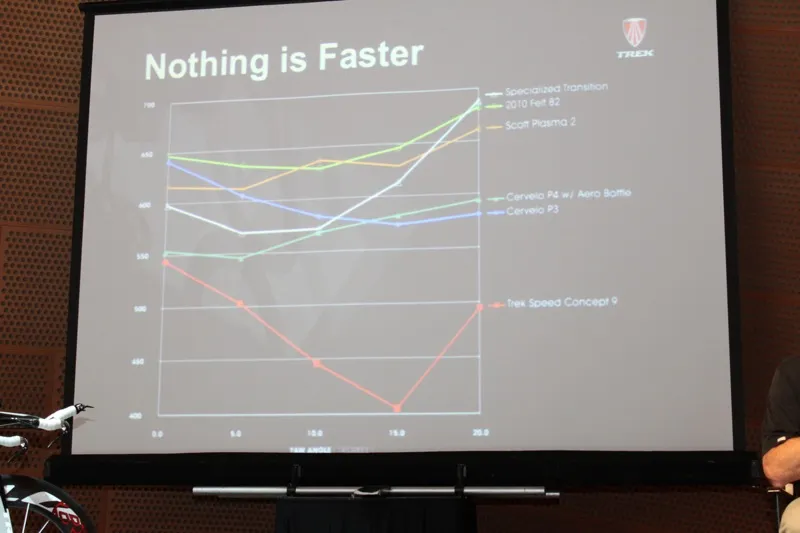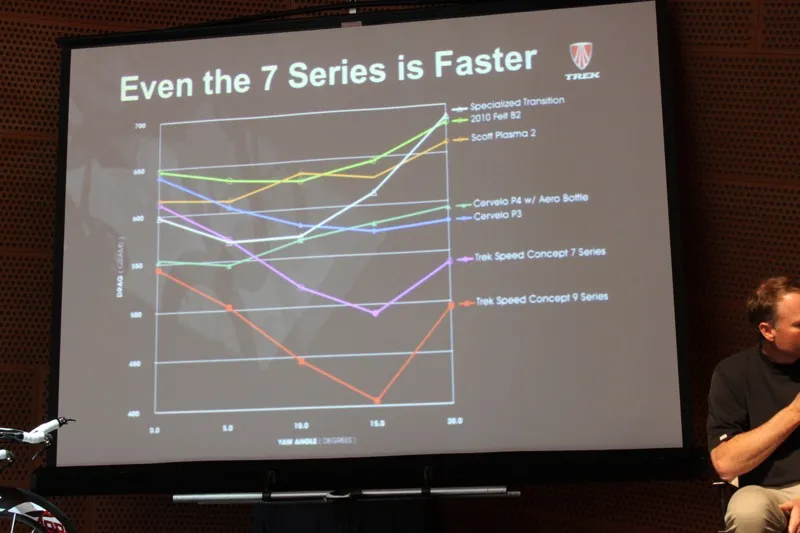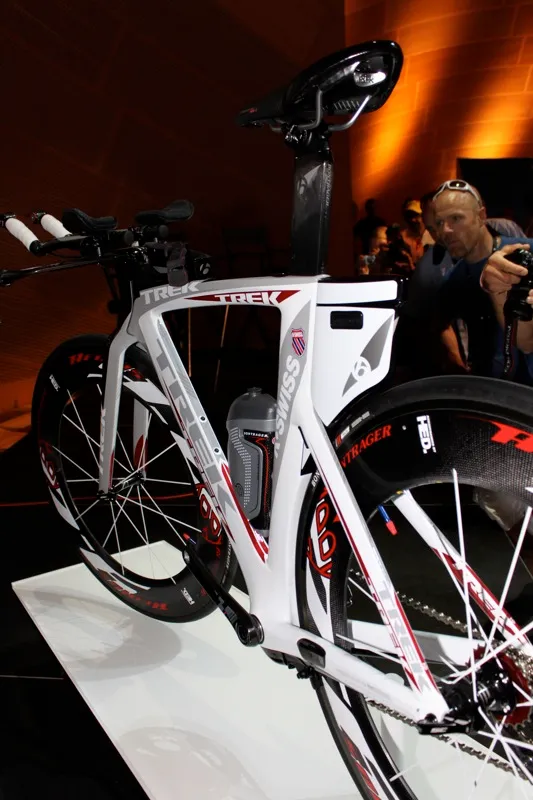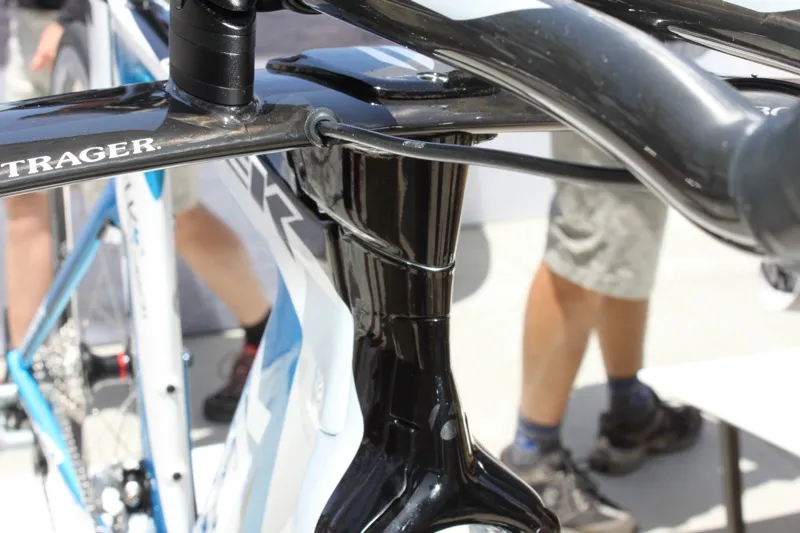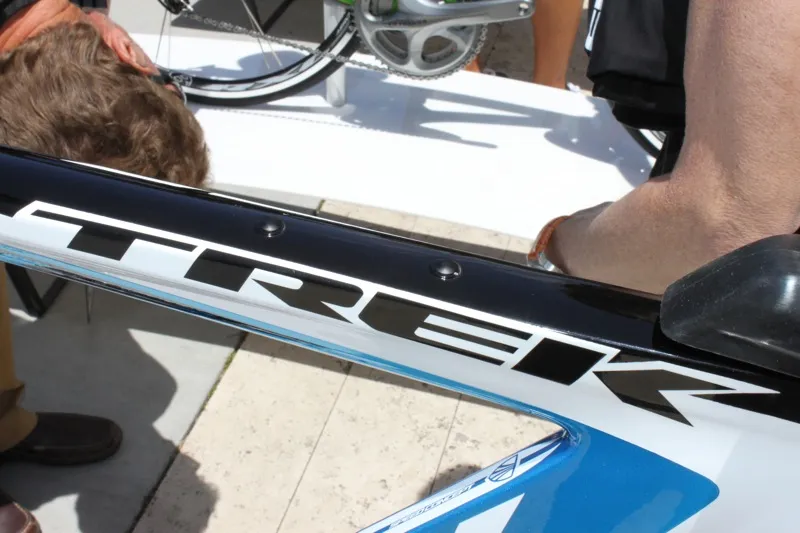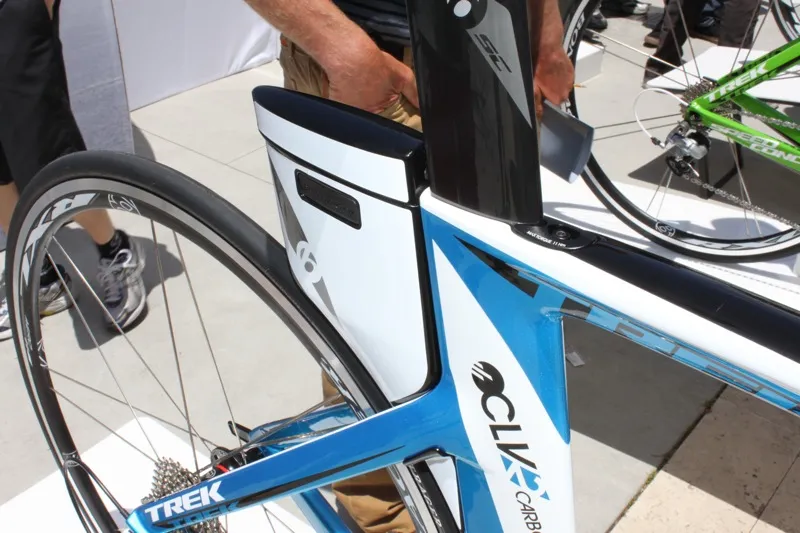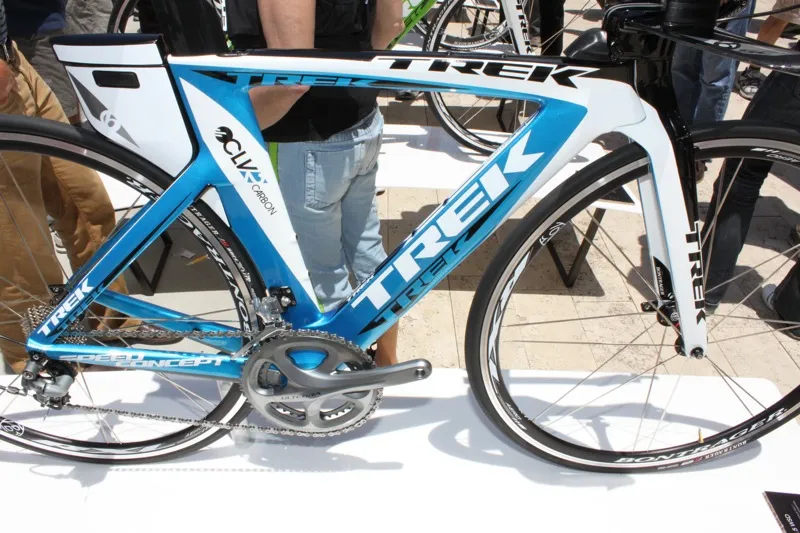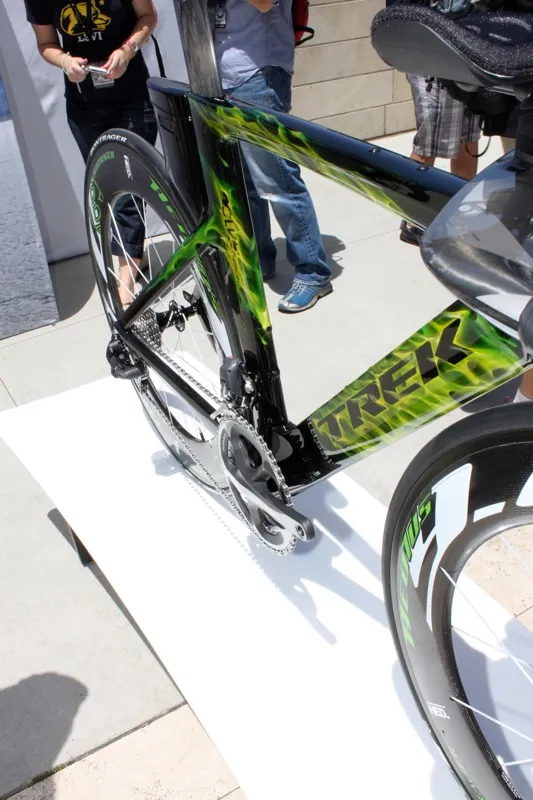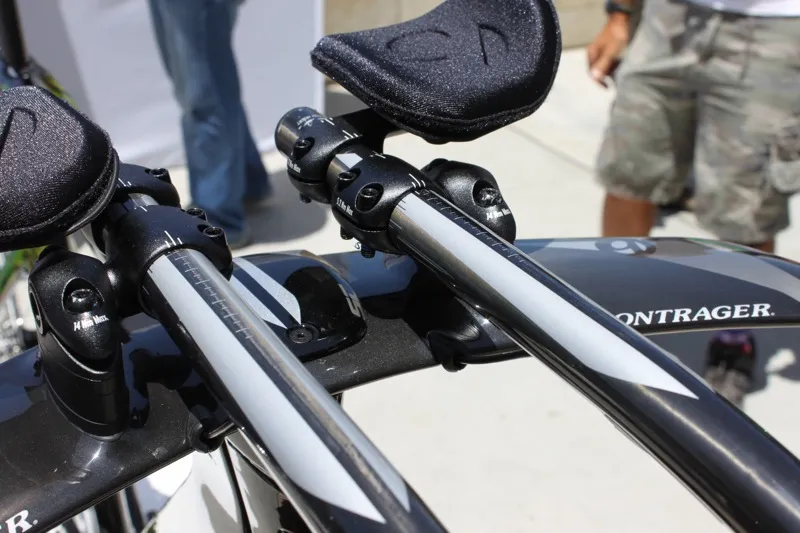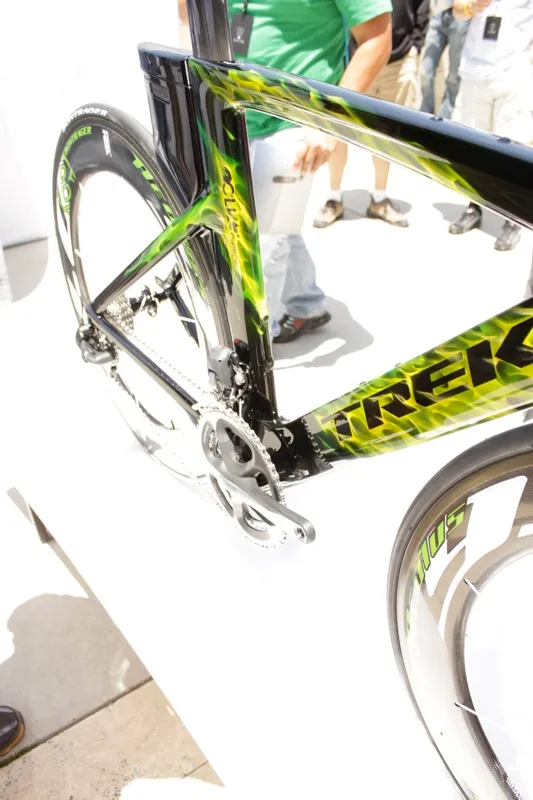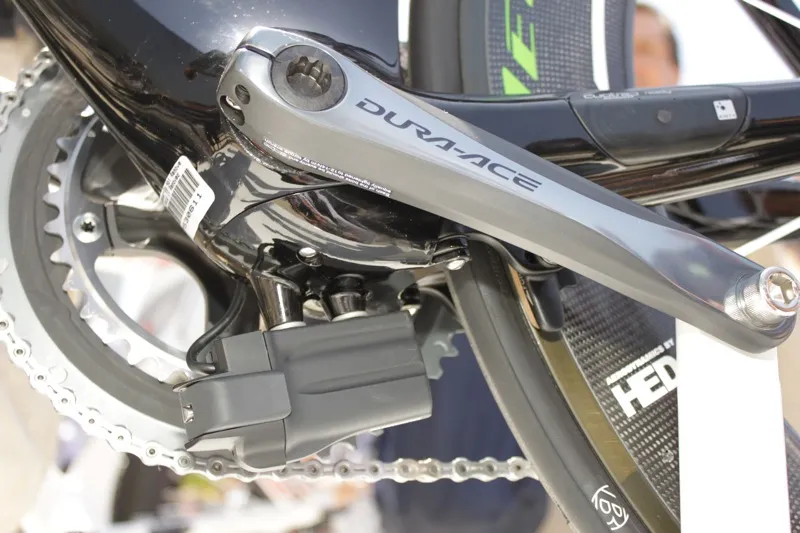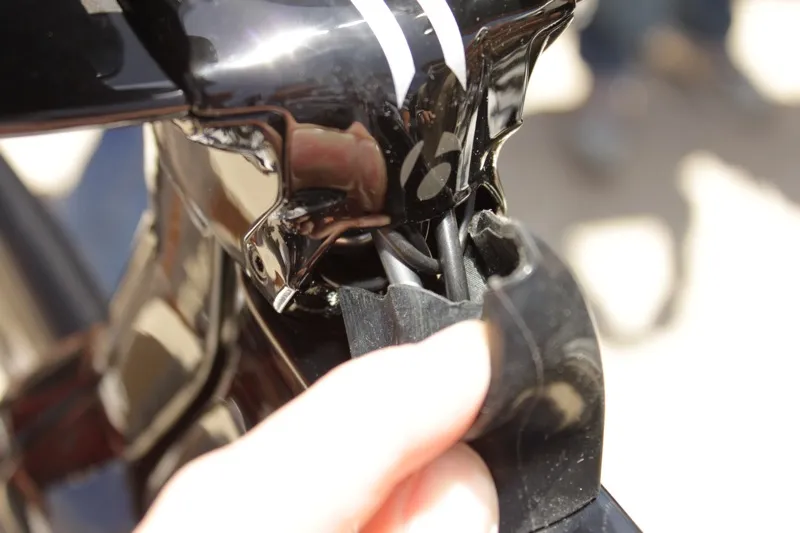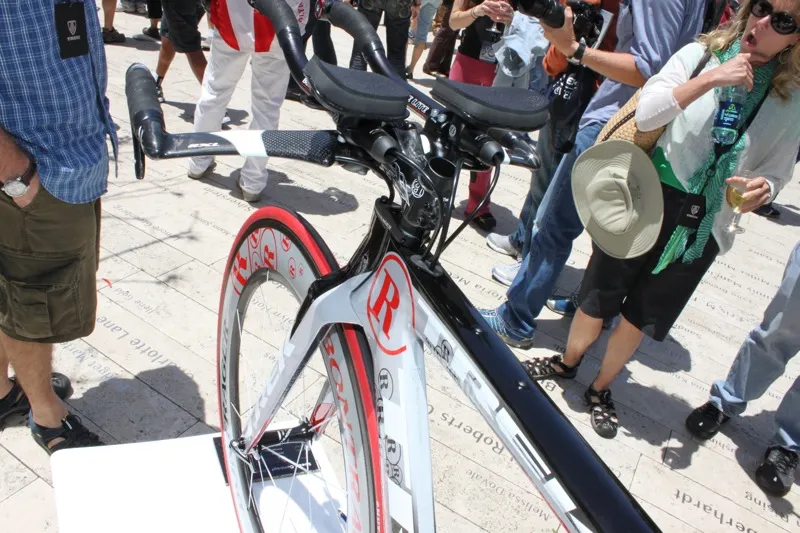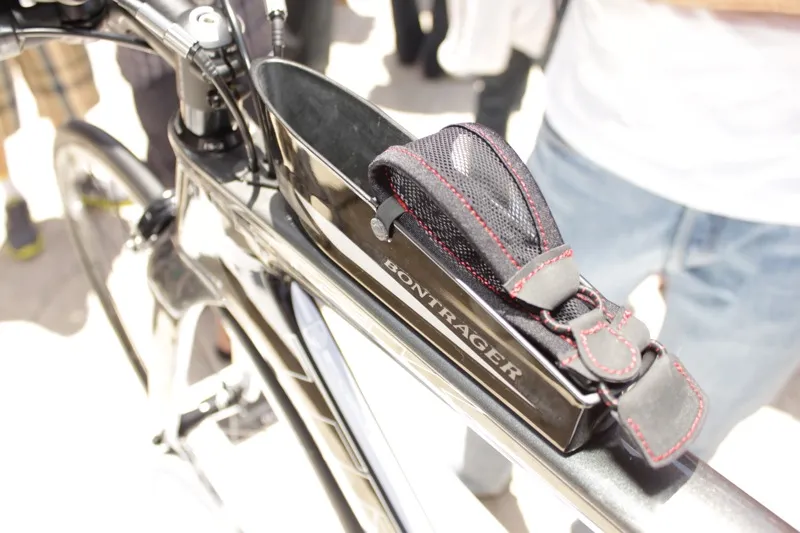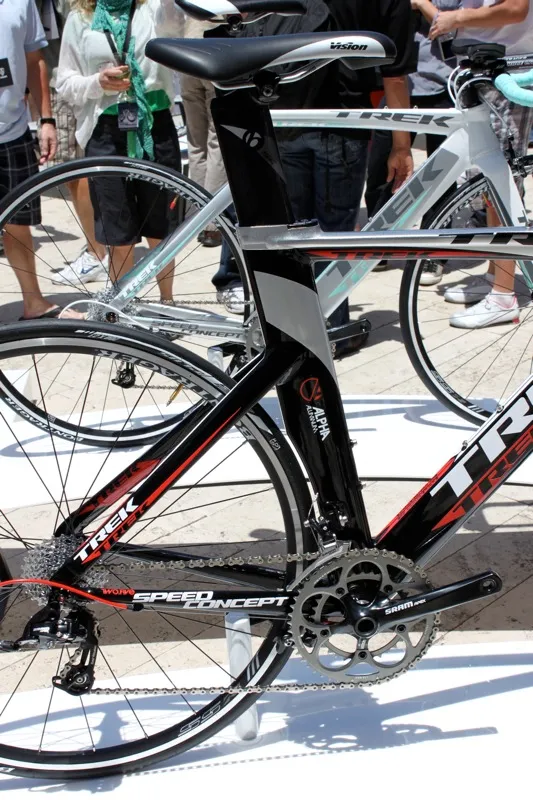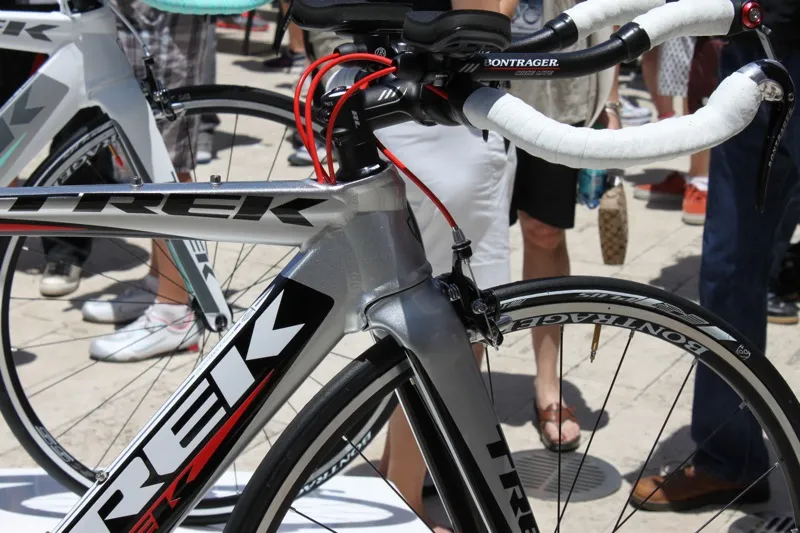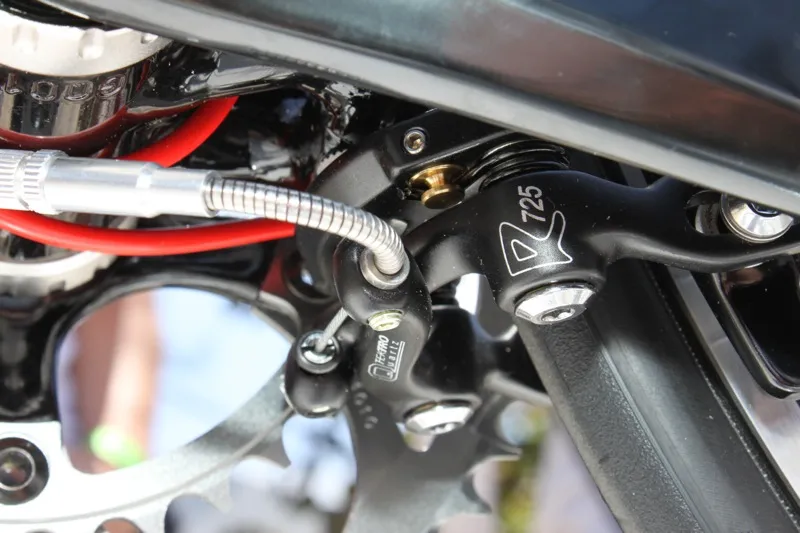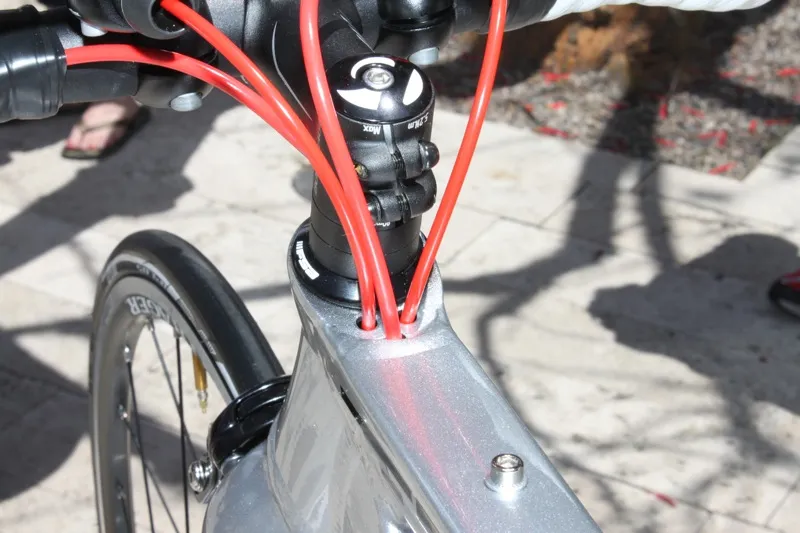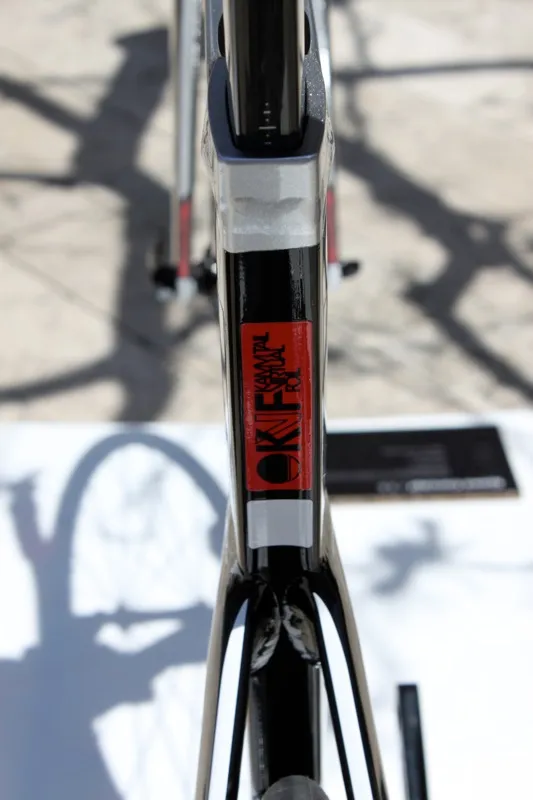Trek launched their production Speed Concept time trial bike during Saturday’s stage 7 time trial of the Amgen Tour of California.
The 2011 line will encompass three model levels – 9, 7 and 2 – with a number of component options within each level. The 9 Series bikes are available for sale now.
It was a big event for the company, which saw president John Burke, product manager Tyler Pilger, advanced concepts engineer Doug Cusack and three-time Ironman champion Chris Lieto, walk a packed room full of Trek dealers through the complete line.
The majority of time trial bikes that any bike manufacturer sells are used for multi-sport racing and that is how Trek will market their Speed Concept.
“It really is an exciting day for Trek,” Burke told the audience. “Today we introduce the most technologically advanced Trek ever, the all-new Speed Concept bike. It's absolutely amazing; it's way beyond where anybody else is in the tri world.”
“Today Trek’s lowest market share is in what category?” asked Burke. “That would be the tri market. My favourite of all fun facts is: tomorrow, what will be Trek’s fastest growing category? Once again it will be the tri market. We're fired up for this one.”
Burke cited triathlon as one of the healthiest segments of the bicycle industry with growth of 30 percent per year over the past five years, 180,000 Ironman distance participants in 2010 and over 1.2 million multi-sport athletes in the US alone.
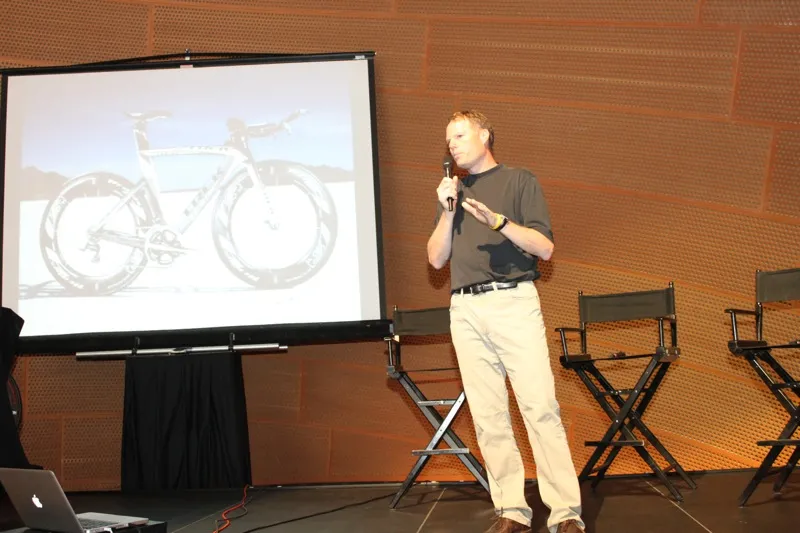
It's not every day that Trek president John Burke attends a product launch. Trek are very excited about the Speed Concept
Speed Concept models
The 9 Series bikes are quite similar to what was introduced at last year’s Tour de France, although their details are now sorted, which include the handlebar and stem system, solutions for triathletes to affix nutrition products and tools to the bike, and even aerodynamic skewers that seamlessly integrate into the frame.
Imagine if the UCI let manufacturers design whatever they wanted for a time trial bike and you'd likely come up with something like Trek’s Speed Concept with its stowage accessories. These increase the bike’s aspect ratio and further aid in reducing aerodynamic drag.
The US-made Speed Concept 9 Series OCLV bikes are what Lieto, Lance Armstrong and the rest of the RadioShack team helped develop and compete on. The Kammtail Virtual Foil (essentially an 8:1 airfoil but with an abruptly chopped trailing edge – see below for more on this) is used in the down tube, seat tube, seatstays, handlebars and fork legs.
The 9 Series includes the rear DraftBox – an aero container above the rear wheel which has space for a tube, multi-tool and CO2 cannister – which, as it's a fairing, isn't legal for UCI races and is also banned by some national federations. The top tube mounted SpeedBox – a 'lunchbox' designed to hold bars, gels and salt tabs – is an optional accessory for all Speed Concept bikes.
The 9 Series costs US$5,499-$8,499 (£5,000-£7,500) depending on spec. The model will also be available in Trek’s Project One programme from the get go, with five select choices and a full range of Signature series graphic packages.
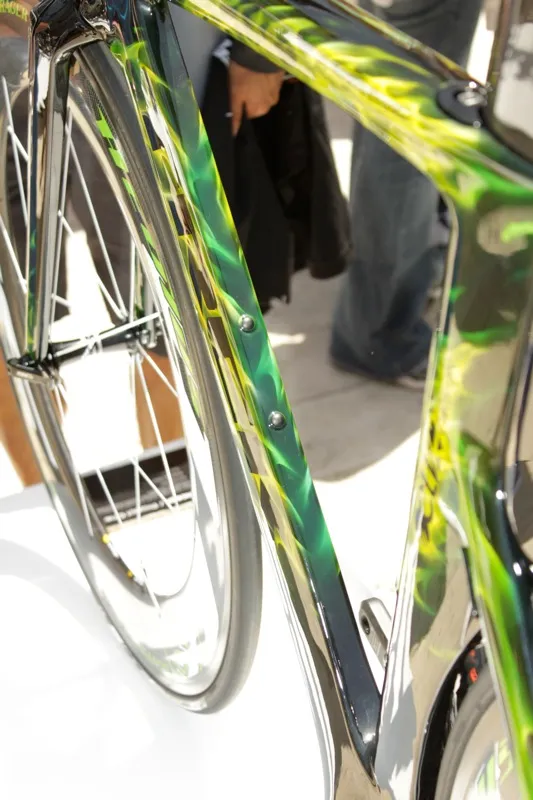
A sample graphics package from Project One
The 7 Series bikes mate a traditional front end – head tube, fork, steerer [the fork legs feature Kammtail] and front brake – to Kammtail tubing and rear aerodynamic features. These Asian-made carbon bikes are claimed by Trek to still be faster than anything on the market, save for the 9 Series model, yet range in price from just $2,399-$3,499 (£2,100-£3,000).
“The only bike that measured faster in the wind tunnel than the Speed Concept 7 Series was the Speed Concept 9 Series,” said Pilger. “The 7 Series offers amazing technology and absolute best-in-class value.”
Of course we must take Trek’s claims for what they are – marketing claims – but if the Speed Concept proves half as fast as they say, then they will still have knocked it out of the park.
Finally, Trek will also offer an Alpha Aluminium 2 Series version, which still retains the majority of the Kammtail aero advantage in the down tube, seat tube, seatstays and fork legs. The Speed Concept 2 Series will cost less than US$2,000; the UK price has yet to be set.
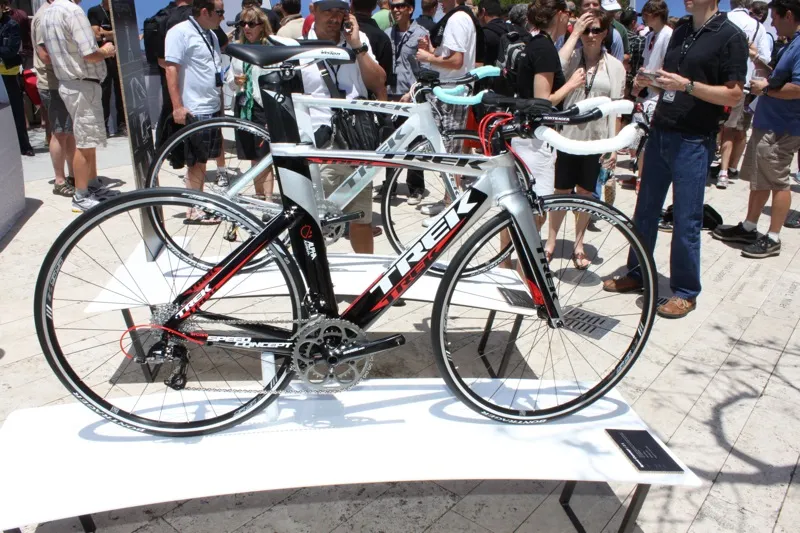
The sub-$2,000 price allows the 2 Series to offer the ultimate blend of speed and affordability
Kammtail Virtual Foil
As a refresher to what was explained by Trek at last year’s Tour de France about the Kammtail aerodynamic design, it's a perfect airfoil shape which puts the aspect ratio at around 8:1 and lops off its tail.
This does two things: it tricks the air into thinking it's flowing over a shape with roughly an 8:1 aspect, making it supremely aero, and it also allows the bike to be lighter, have a stiffer tube structure and remain infinitely more stable in crosswinds because of the actual 3:1 shape.
Furthermore, the virtual foil’s tail can bend as the wind angle changes to make the frame even faster in crosswinds. Trek claim this makes the Kammtail the perfect aerodynamic shape, all the time, no matter what direction the wind is blowing in.
“One of the tools we have at Trek that most other bike companies don’t have is something called Computational Fluid Dynamics,” said Cusack. “That’s a virtual wind tunnel inside a computer. We can take shapes, put them in, run them and find out what’s the best shape.”
The Kammtail comes from the auto industry, where it was developed to deal with the size and impracticality of designing the perfect airfoil for a car’s body.
“When you take a car and make it into a really nice airfoil shape you have the benefits of the airfoil, but you have a lot of bad things that happen too,” said Cusack. “It’s the same problem we have in bicycles, so we went and tried all the shapes and looked at different things.”
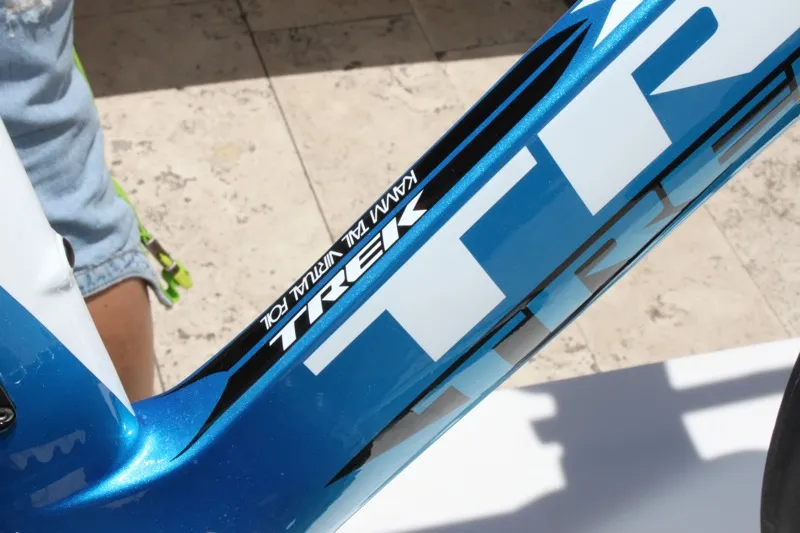
The Kammtail is an airfoil with a truncated tail as seen here on the Speed Concept's down tube
Trek use the Kammtail in the down tube, seat tube, seatstays, fork blade and handlebar, and each is uniquely refined for their position. Once Trek had their prototype they took it to the San Diego low speed wind tunnel for testing.
Cusack claims that, at first, they didn’t believe the numbers; the Speed Concept has such low drag that it couldn’t even be plotted on the same graph range as its competitors. After checking and rechecking, Trek now claim that the 9 Series Speed Concept is one-third faster than the next fastest competitor's bike – as they said, almost unbelievable.
“We can really say that the Speed Concept is the world’s fastest bike,” said Cusack.
Integration: an overall solution
“We looked at the bike from an overall perspective,” said Tyler Pilger, Trek’s road product manager. “Aerodynamics, integration, fit – right now, not everybody is looking at all three aspects. If you look at the front of the Speed Concept it's the cleanest bike out there. We carry that integration story throughout the bike.”
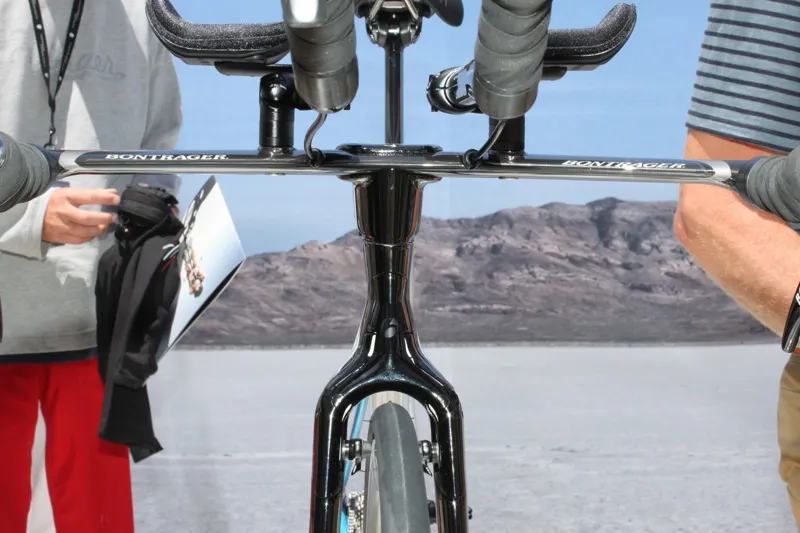
When Trek say clean, they really mean it
The Speed Concept integrates its cables completely save for a short run of shifter cable from the middle of the aero extension to the base bar, and the rear derailleur’s cable loop from the back of the chainstay dropout. This adds to the aero advantage and overall aesthetic of the bike. The brake cables do even better, never seeing the light of day from lever to calliper. The brakes themselves are totally integrated into the frame and fork.
Like the 6 Series Madone introduced last year, the Speed Concept is able to go completely zip-tie free because of its non-drive chainstay-mounted DuoTrap ANT compatible speed and cadence sensors. These sensors work with any computer and power meter that uses the ANT protocol.
Then there’s the whole topic of storage. No right minded time triallist is going to be caught with a Bento box on his top tube; Trek claim their storage solutions, especially off the rear of the bike, actually make it faster. The reasoning seems sound, if just by looking at how the DraftBox toolbox shrouds the rear wheel. The front SpeedBox is a bit harder to justify aerodynamically, yet it's a very clean solution, especially when compared to the other options available.
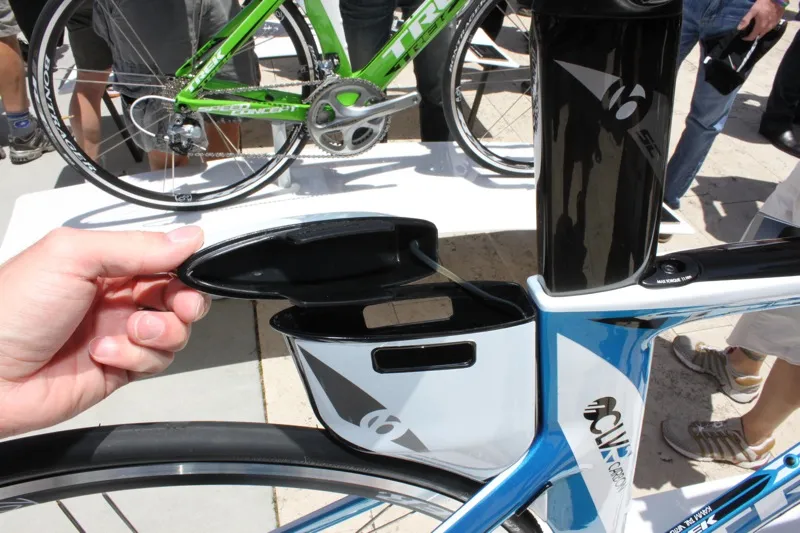
The DraftBox affords extra speed, but also a place for tube, multi-tool and CO2
Trek complete the Speed Concept by offering unparalleled adjustability on the aero extensions that come with the bikes, and a full range of five sizes; the smallest is equipped with 650c wheels.
The geometry for the Speed Concept is also slightly refined from what was offered with the previous TTX. The bottom bracket is a bit lower to bring the rider further down into the bike. The head angle is a half a degree shallower, making for a more stable ride, lower centre of gravity and better handling.
All of the models are compatible with Trek’s aero storage solutions. The 9 Series bikes are available now. The 7 Series will be available in August. Riders will have to wait until September for the 2 Series.

